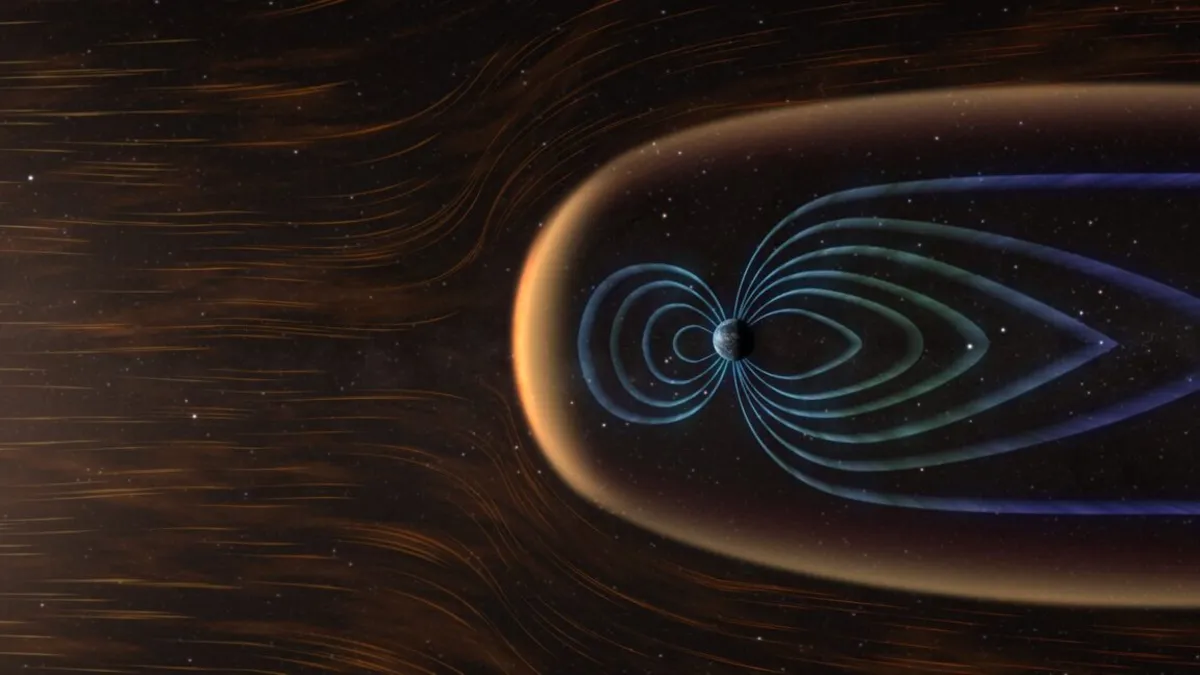
On Wednesday, two NASA satellites successfully launched into orbit from California aboard a SpaceX Falcon 9 rocket, marking the beginning of a groundbreaking $170 million mission aimed at understanding a complex phenomenon in space physics that has puzzled scientists since the inception of the Space Age. The twin spacecraft are integral to the TRACERS mission, which stands for Tandem Reconnection and Cusp Electrodynamics Reconnaissance Satellites. This mission will span at least a year, focusing on measuring plasma conditions in narrow regions of Earth's magnetic field, commonly referred to as polar cusps.
Located over the Earth's poles, the polar cusps play a critical yet poorly understood role in the formation of stunning auroras. These natural light displays occur when plasma from the Sun interacts with the Earth's magnetic field. This same interaction can lead to geomagnetic storms that disrupt GPS navigation, radio communications, electrical grids, and satellite operations. Such storms are often triggered by solar flares or coronal mass ejections, which expel blobs of plasma into the Solar System. When these flows are directed toward Earth, they can create beautiful auroras but also expose us to harmful effects, such as the extreme geomagnetic storm last year that degraded GPS signals and resulted in over $500 million in economic losses in the agricultural sector due to delayed spring planting.
Understanding the Sun and the resulting space weather is more crucial than many realize, according to Joe Westlake, director of NASA's heliophysics division. The launch of the TRACERS mission faced a delay of 24 hours due to a regional power outage that disrupted air traffic control near the Falcon 9 launch site on California's Central Coast. SpaceX had to abort the countdown just under a minute before liftoff, rescheduling the flight for the following day.
The TRACERS mission will investigate a process known as magnetic reconnection. As particles from the solar wind travel outward at speeds of up to 1 million mph, they carry fragments of the Sun's magnetic field. Upon reaching Earth, the solar wind interacts with our magnetic field, leading to high-energy collisions that break and reconnect magnetic field lines. This process propels solar wind particles into Earth's magnetosphere at speeds approaching that of light. Some of these particles are drawn into the polar cusps, descending into the upper atmosphere and causing the captivating auroras we see.
Despite the occurrence of these phenomena just above us, scientists have yet to fully decipher their mechanics. A single spacecraft would not suffice, as scientists require at least two satellites, each meticulously positioned in custom polar orbits. These satellites are equipped with specialized instruments to measure magnetic fields, electric fields, electrons, and ions. Since magnetic reconnection is a dynamic process, having two satellites allows researchers to capture real-time changes rather than waiting for a single satellite to complete its 90-minute orbit. David Miles, principal investigator for the TRACERS mission from the University of Iowa, emphasizes the importance of understanding whether changes result from the system itself or from the magnetic reconnection process moving around.
The TRACERS mission is unique because it features two identical satellites, each approximately the size of a washing machine, orbiting at an altitude of 367 miles (590 kilometers). Over the next few weeks, the TRACERS satellites will position themselves such that one trails the other by about two minutes as they orbit the Earth at nearly five miles per second. This setup enables the satellites to sample the polar cusps sequentially, allowing scientists to gather data on rapid changes instead of waiting for a 90-minute refresh. The goal is to collect around 3,000 measurements of magnetic reconnections within a year, providing a substantial dataset to analyze the differing evolutions of space weather events.
The findings from the TRACERS mission will not only enhance our understanding of reconnection processes in the magnetosphere but will also help predict space weather. Understanding how various factors influence reconnection will allow scientists to model and anticipate specific effects that could impact human activities. As Craig Kletzing, the principal investigator who led the TRACERS science team until his passing in 2023, stated, “There is broader knowledge to be gained with a mission like TRACERS.” Magnetic reconnection is a common phenomenon throughout the Universe, linking solar flares and coronal mass ejections from the Sun.
Alongside the TRACERS satellites, several other payloads were launched aboard the Falcon 9 rocket. This included a NASA-sponsored mission named PExT (Polylingual Experimental Terminal), a small technology demonstration satellite designed to test a communications package capable of interfacing with three different networks: NASA’s Tracking and Data Relay Satellites (TDRS) and commercial satellite networks owned by SES and Viasat. PExT is particularly noteworthy for its ability to seamlessly switch between multiple satellite relay networks, which will be essential as NASA transitions away from TDRS satellites in the 2030s.
Another NASA-funded technology demonstration, Athena EPIC, also rode on the Falcon 9. Led by NASA's Langley Research Center, this mission utilizes a scalable satellite platform developed by NovaWurks to measure how much energy Earth radiates into space, a critical factor for climate research. The mission also aims to demonstrate how adaptable satellite designs could benefit future NASA missions.
In addition, the launch included several other payloads, such as REAL, a NASA-funded CubeSat project focused on investigating the Van Allen radiation belts and space weather, and LIDE, an experimental 5G communications satellite backed by the European Space Agency. Five commercial spacecraft from the Australian company Skykraft were also launched, joining a constellation of small satellites aimed at enhancing tracking and voice communications between air traffic controllers and aircraft in remote regions.